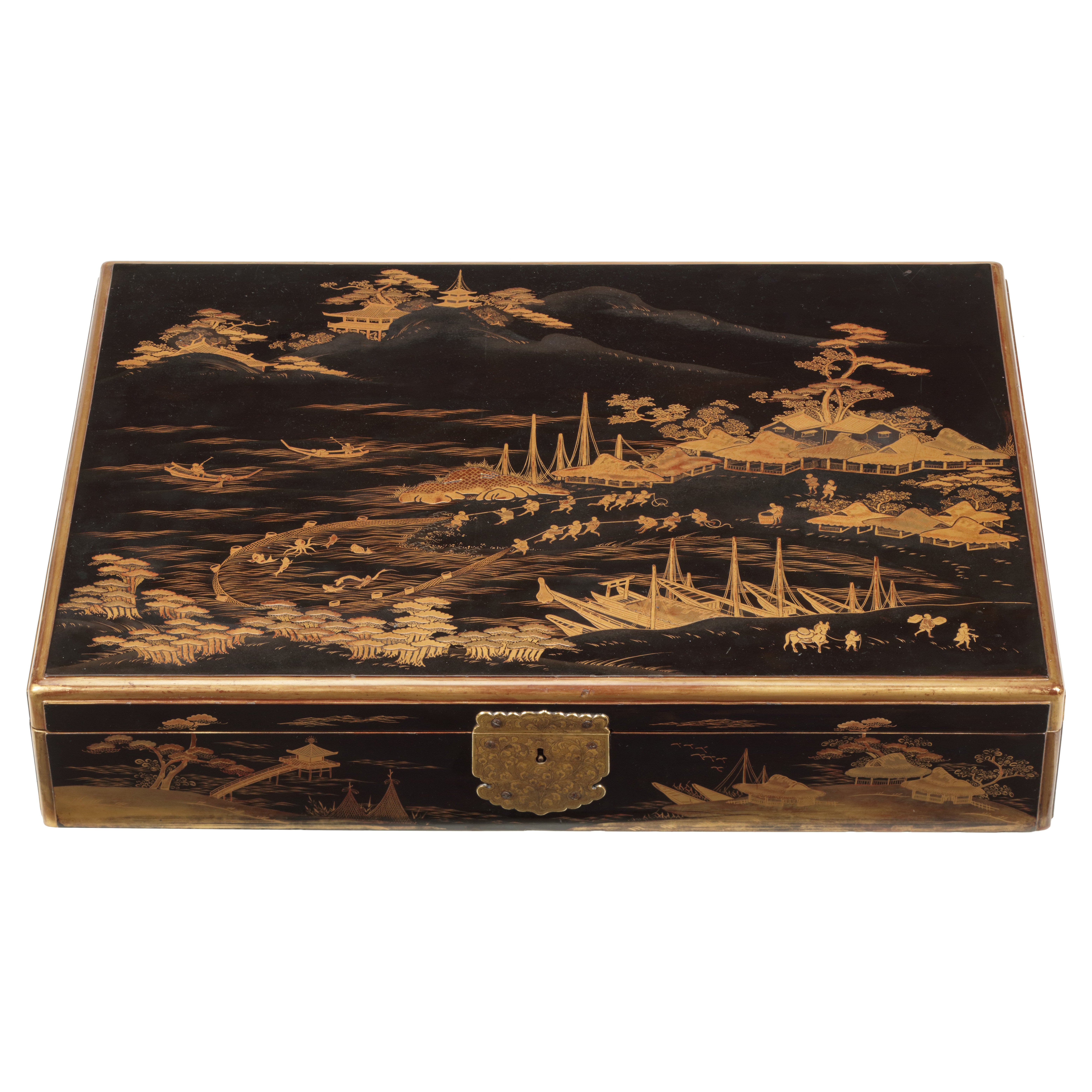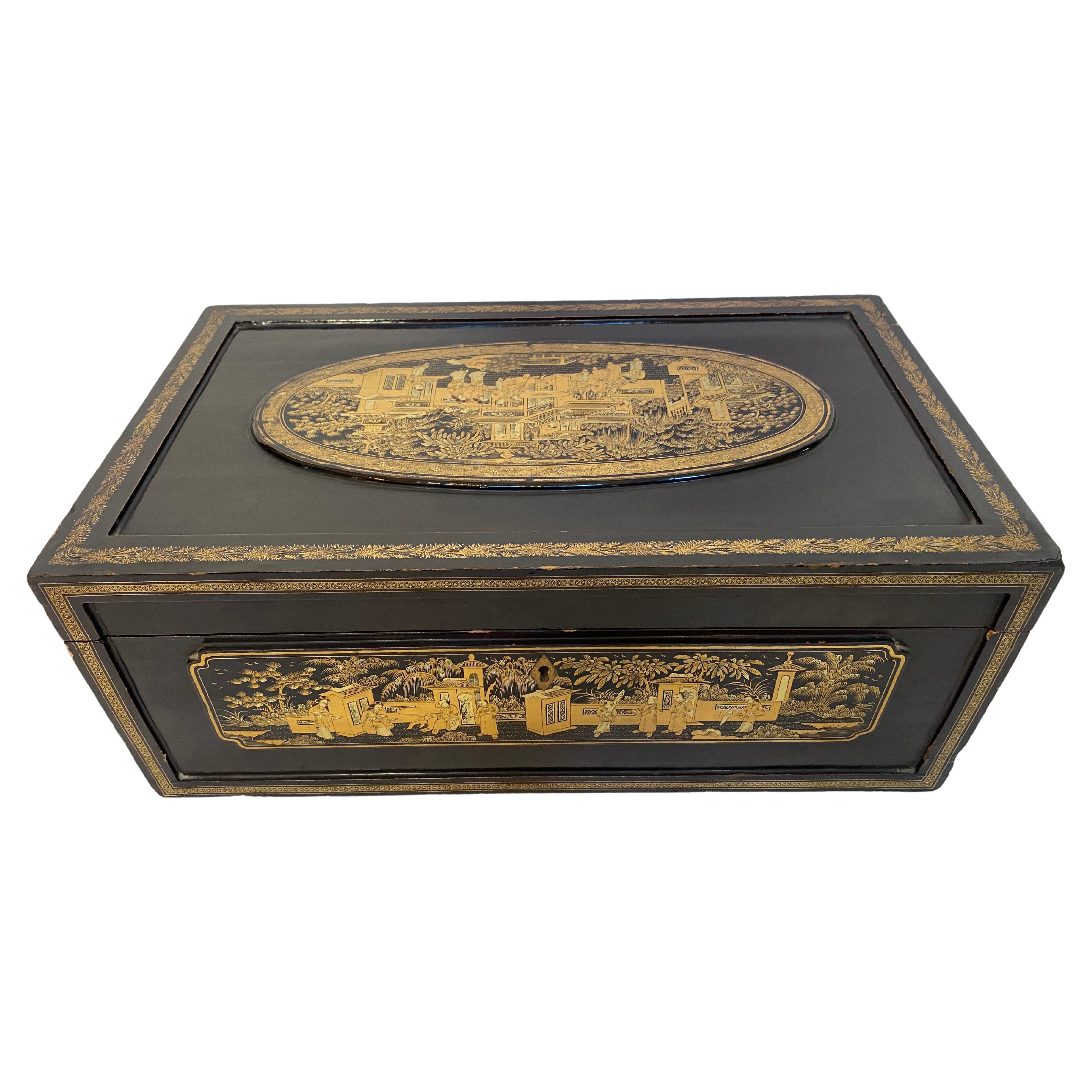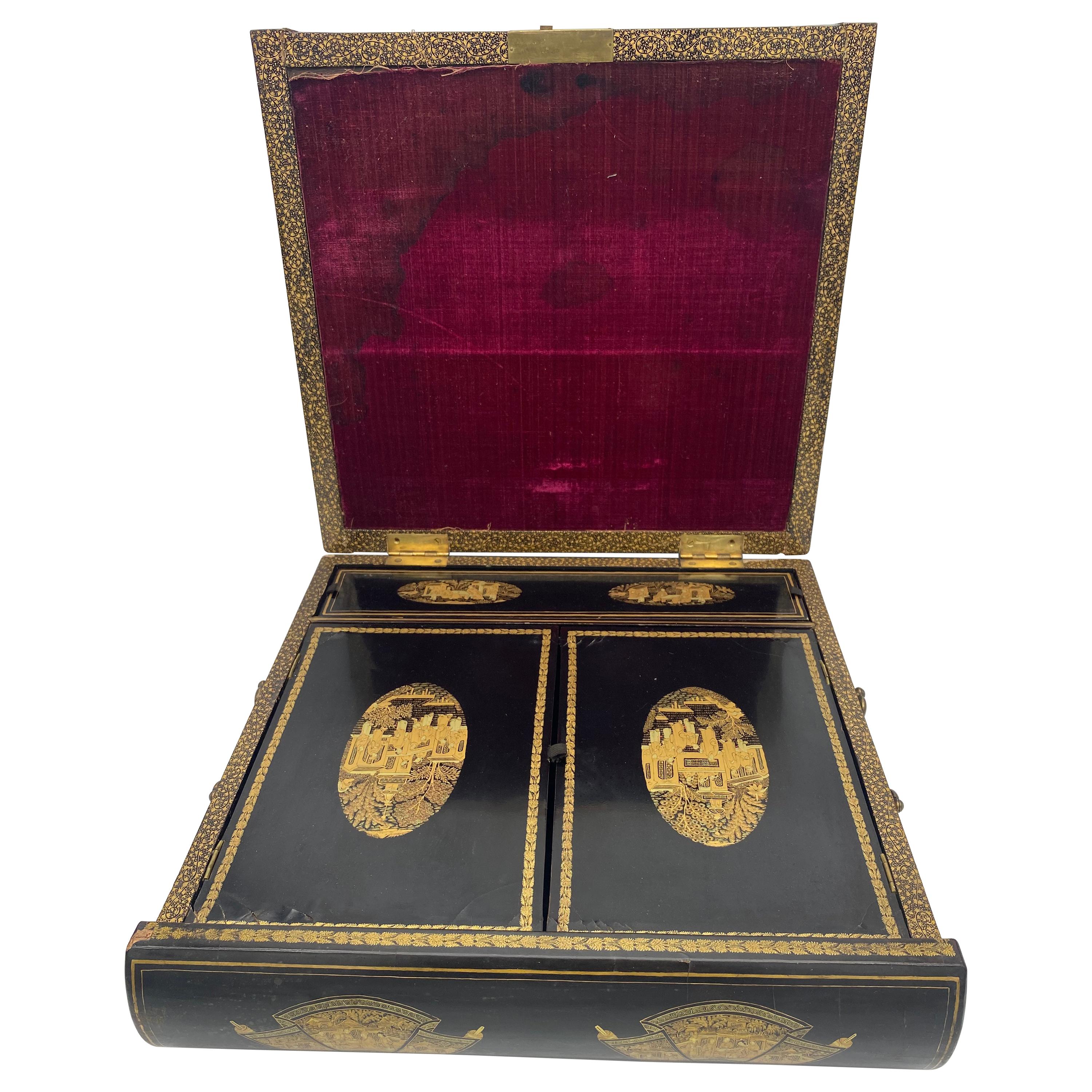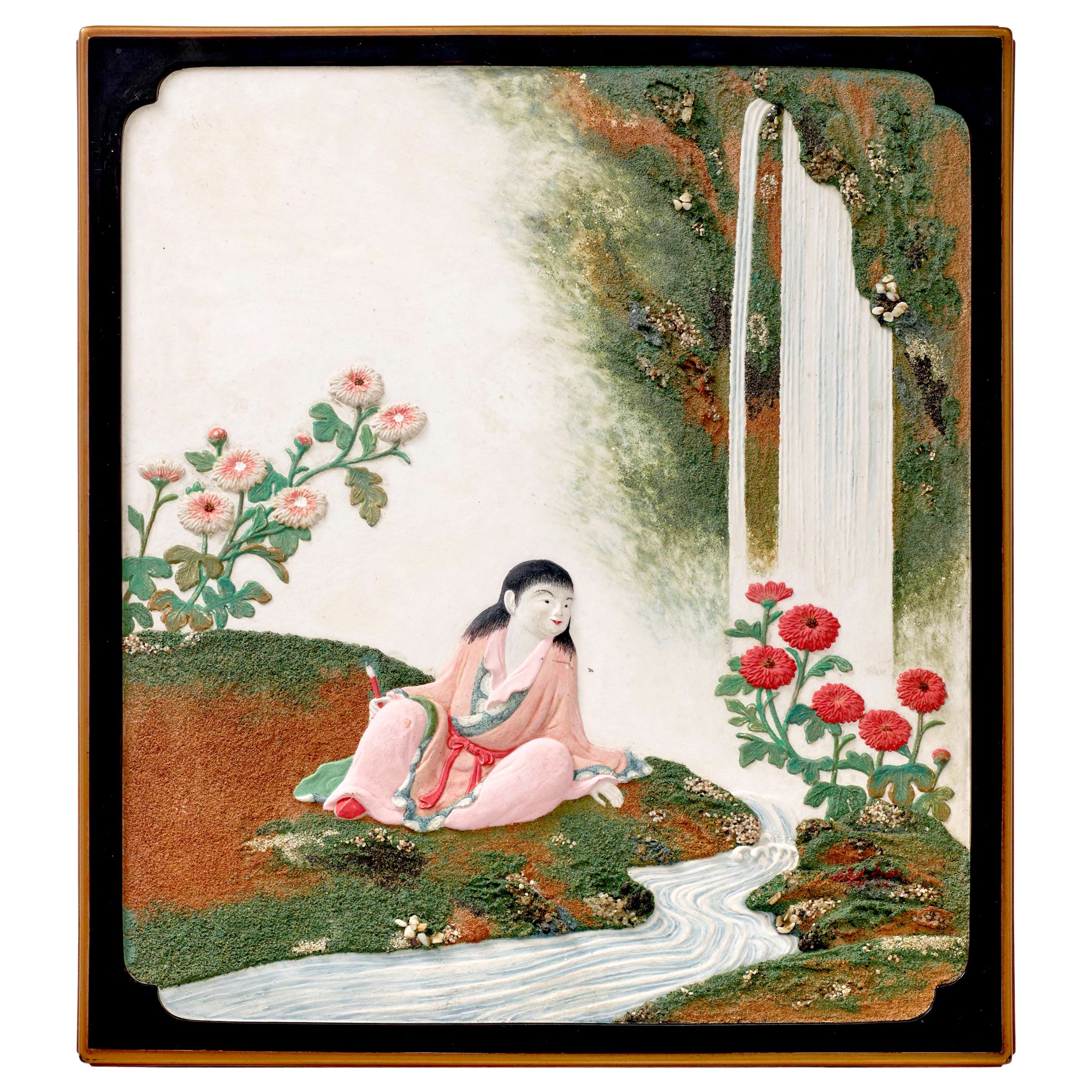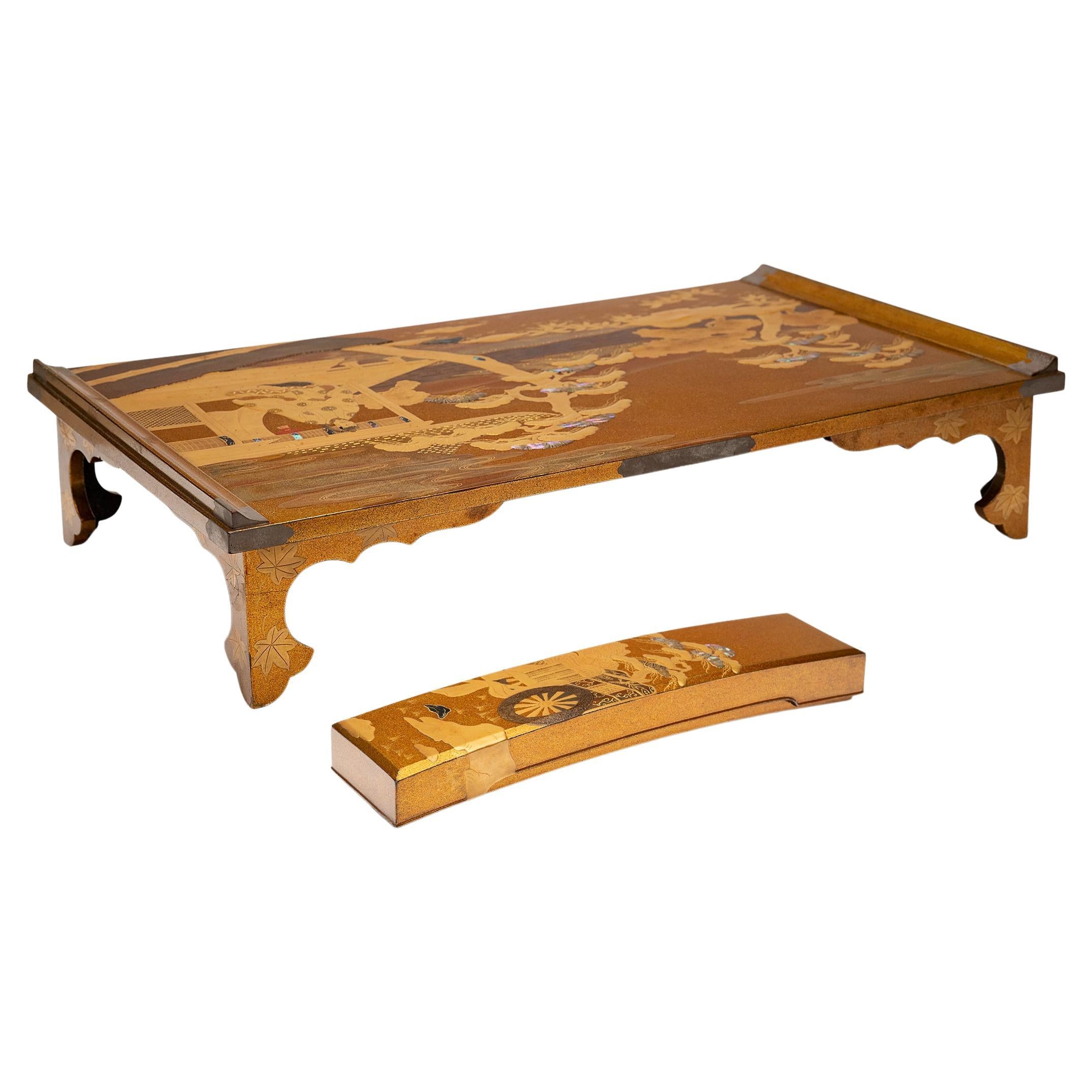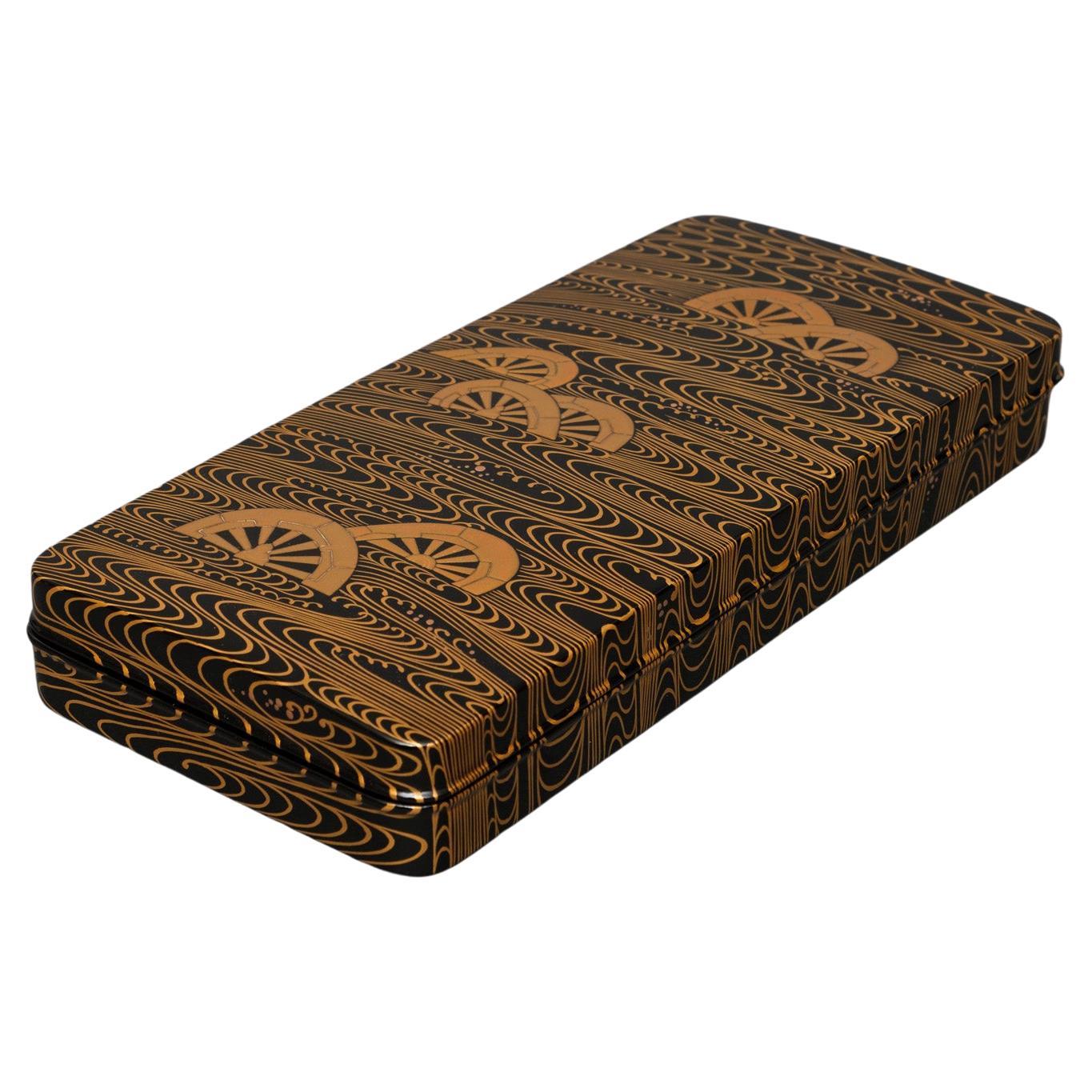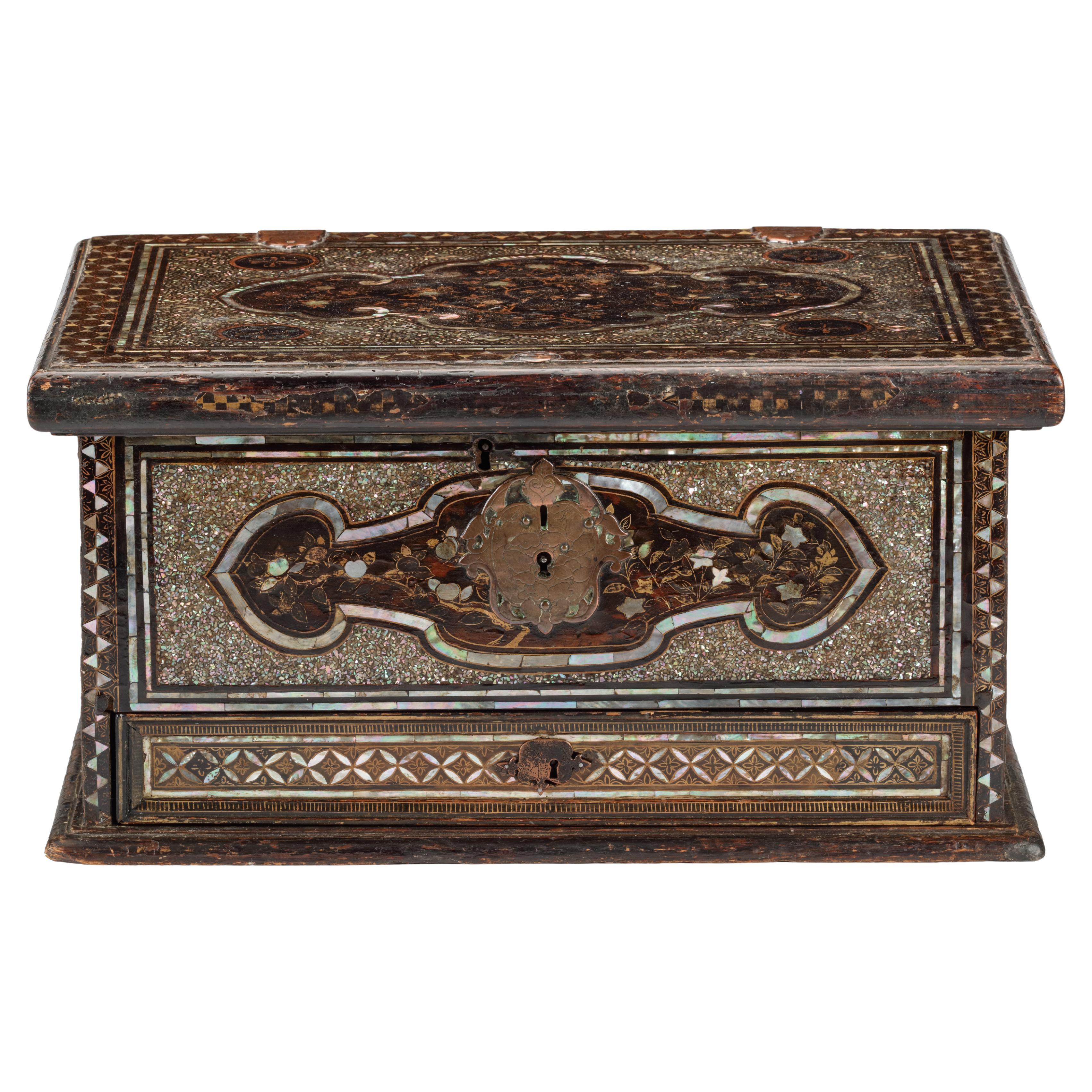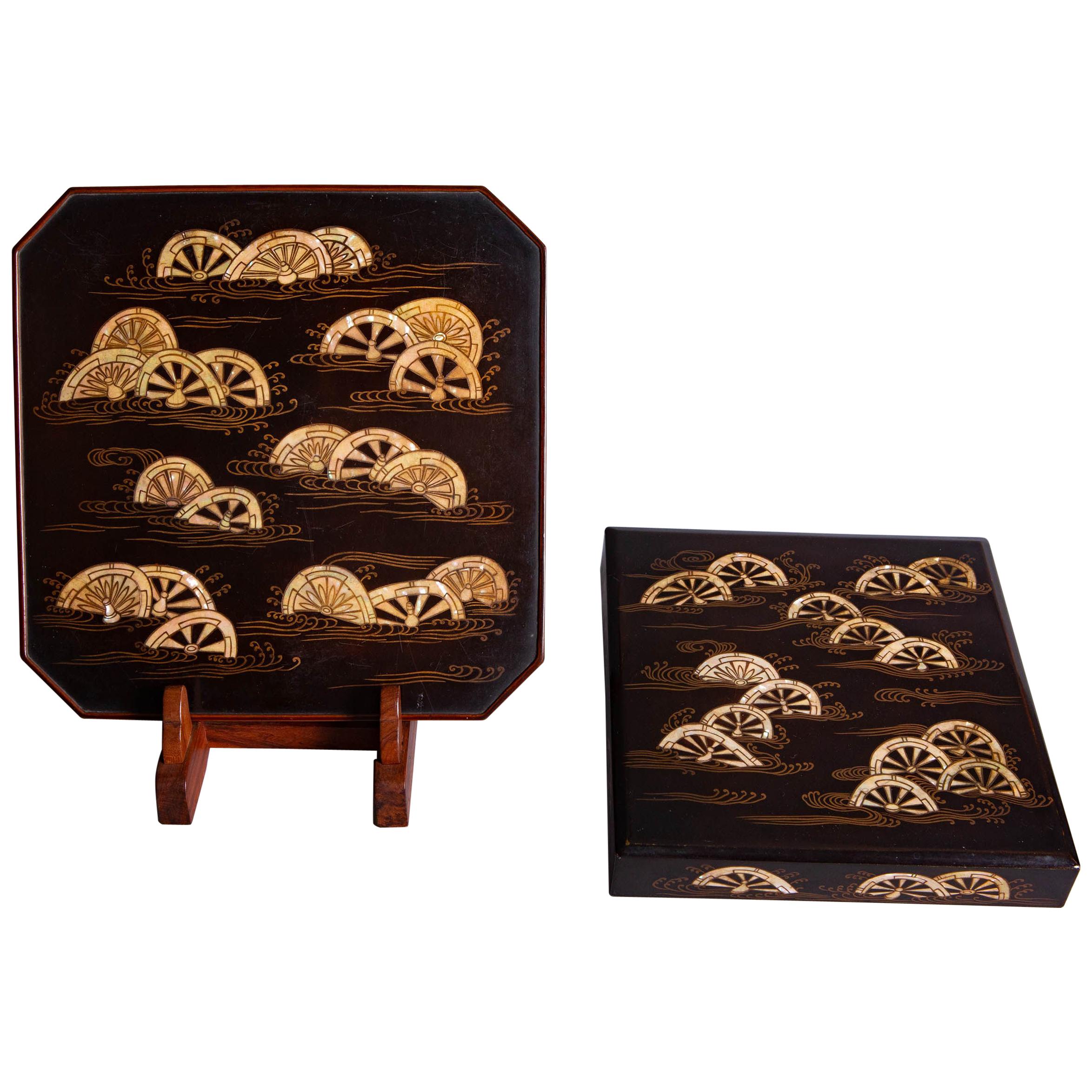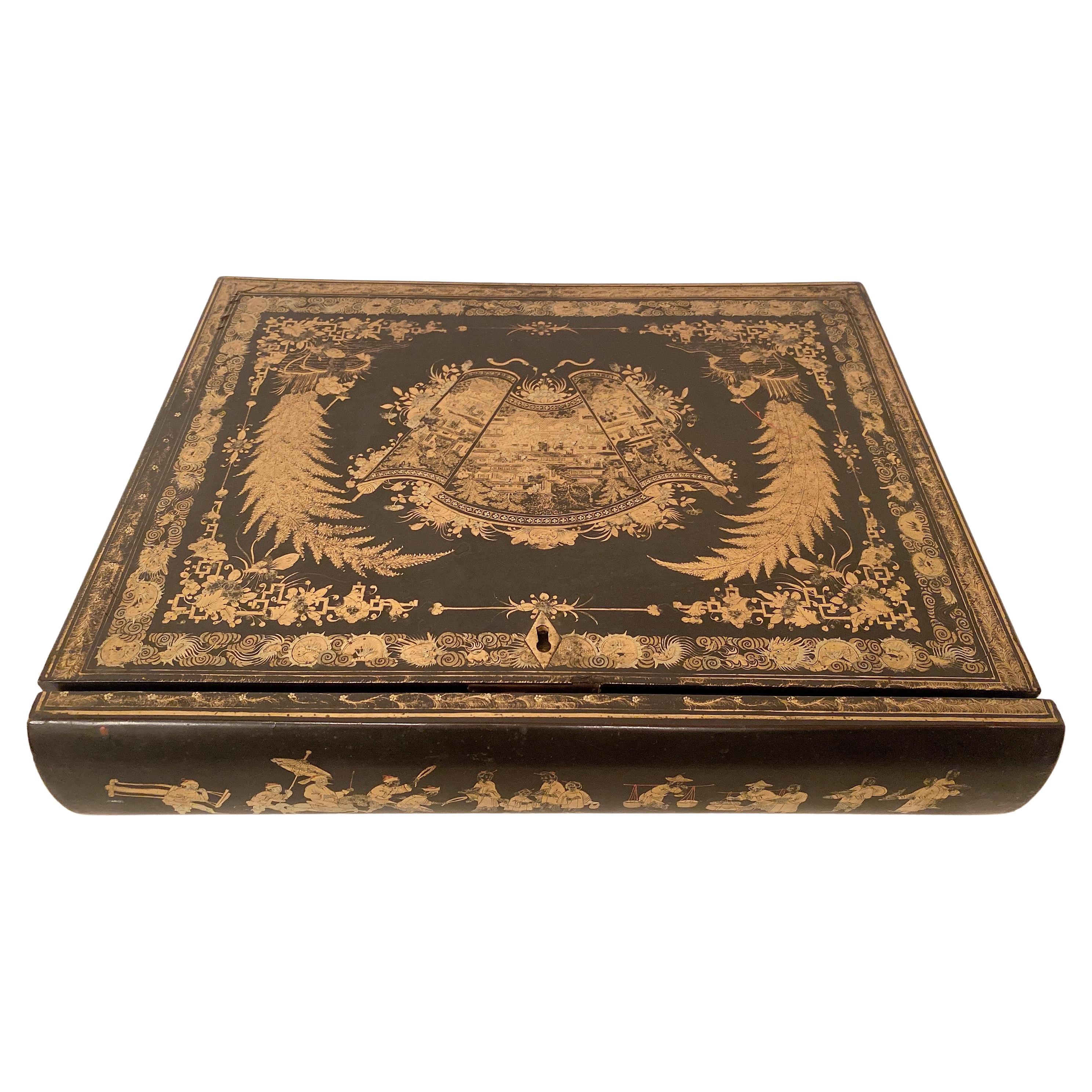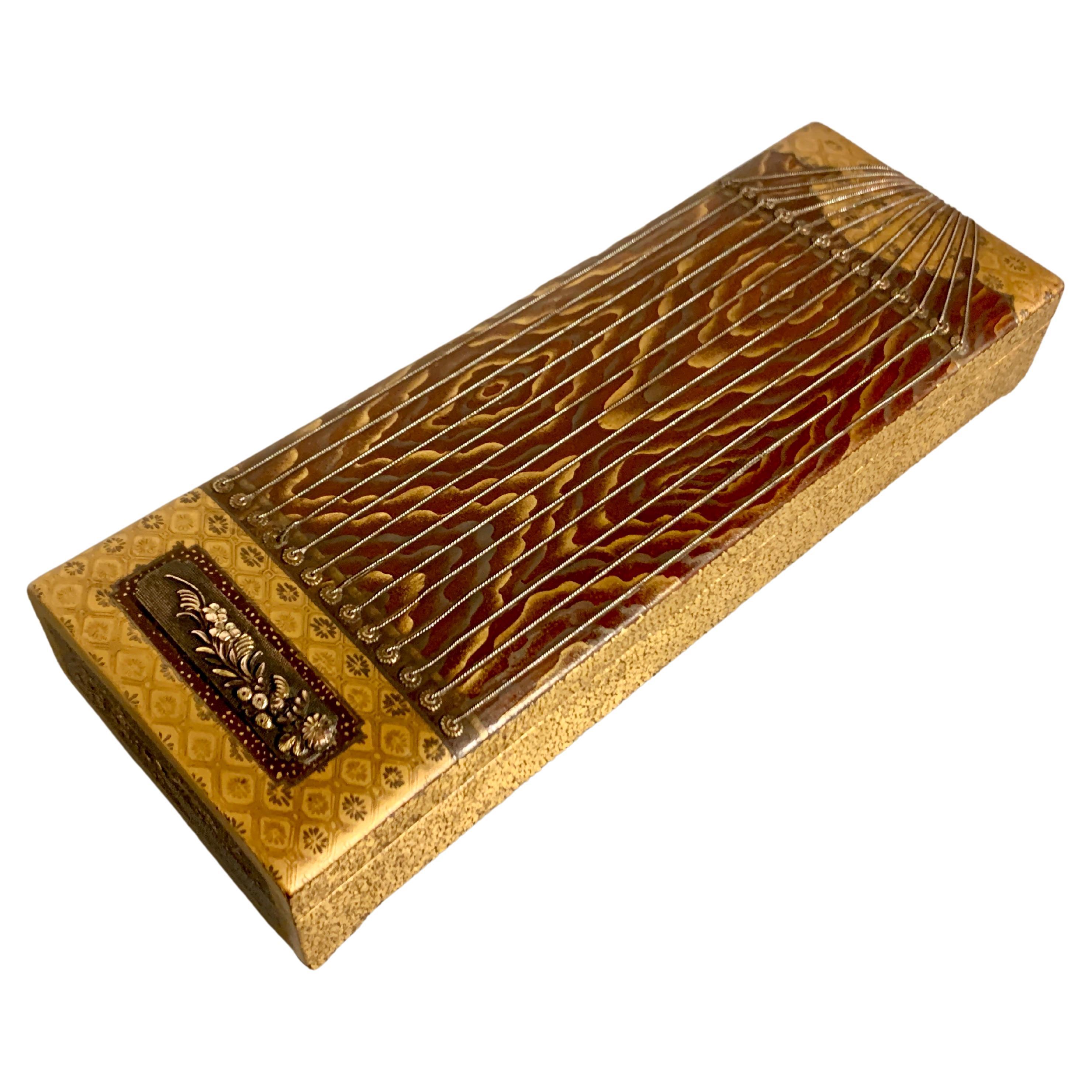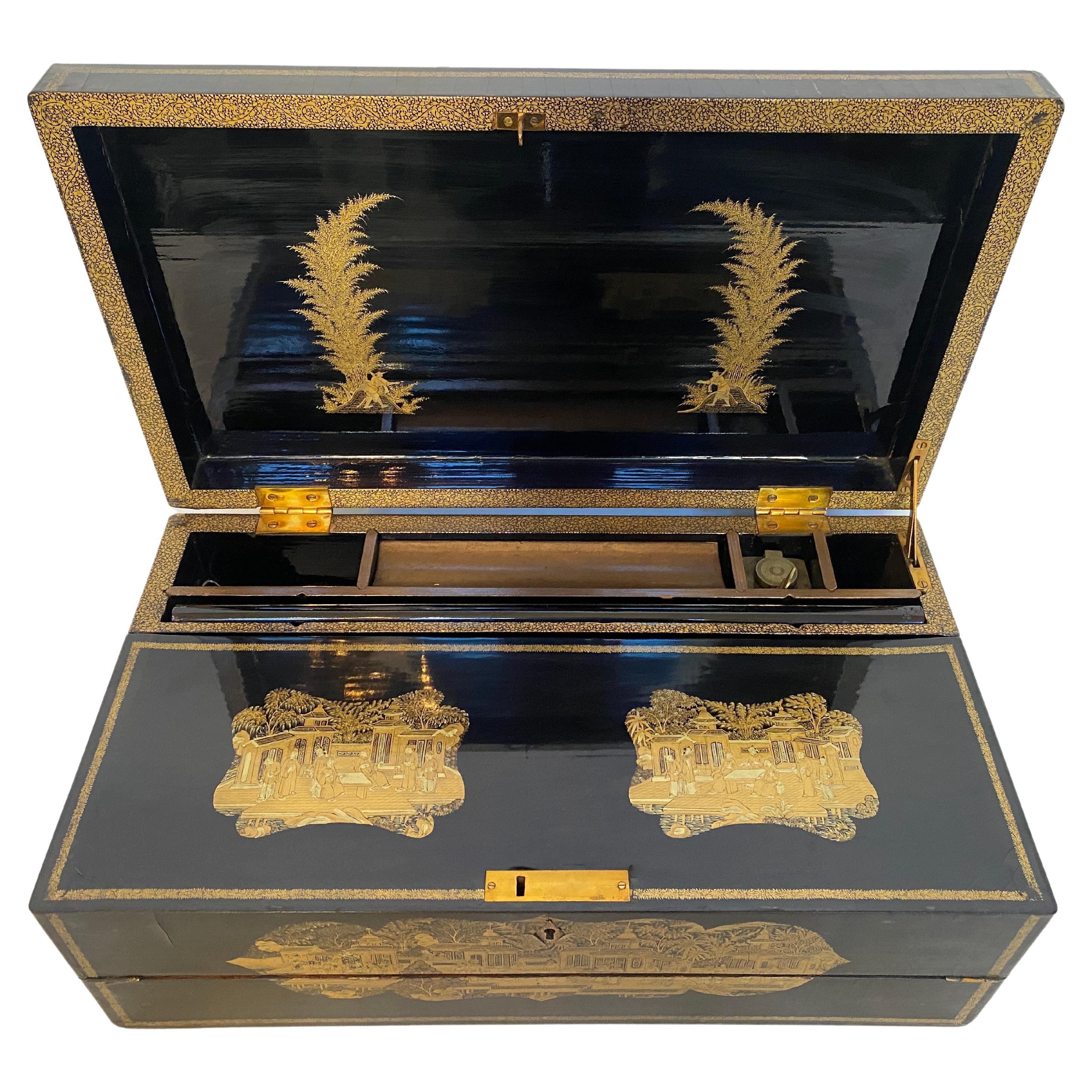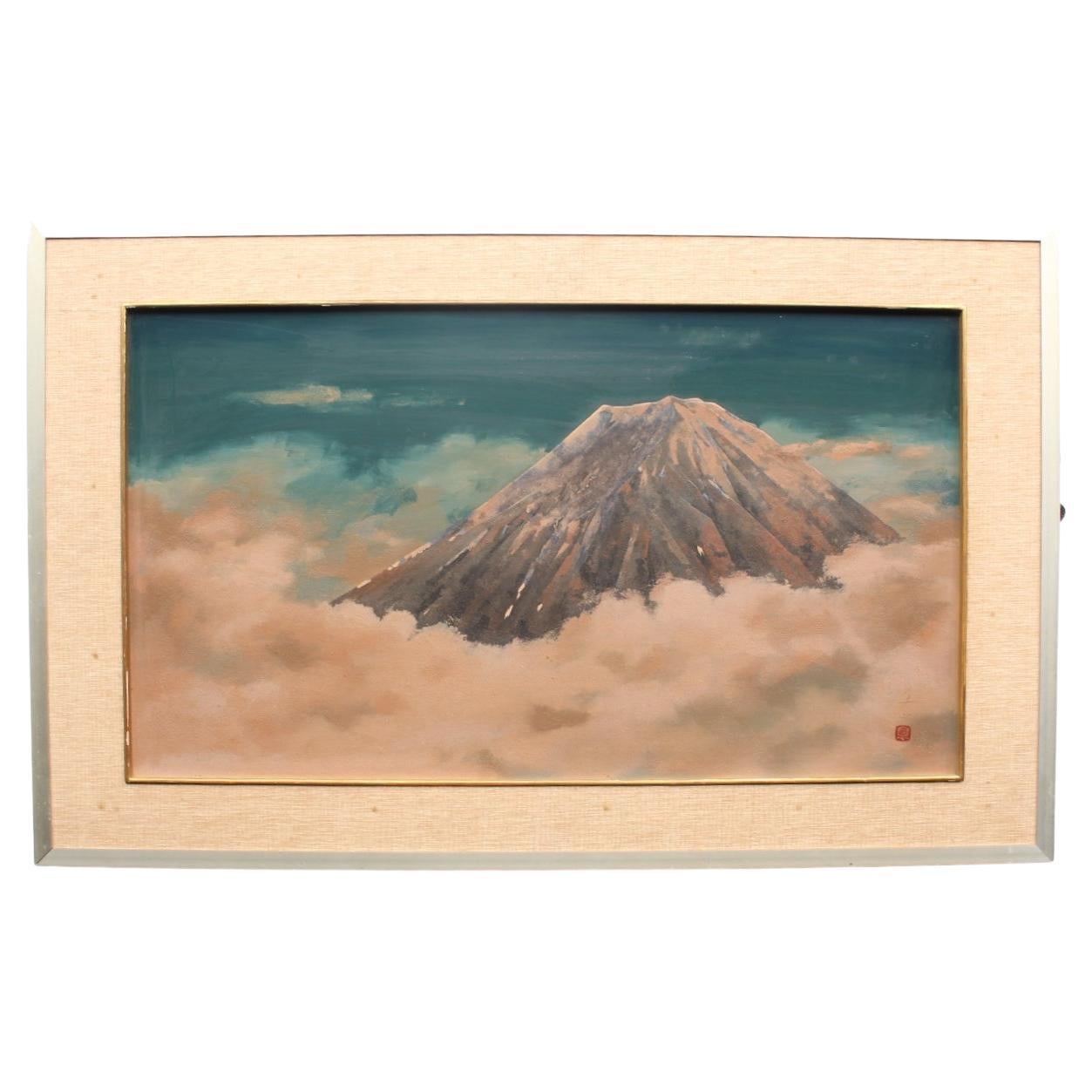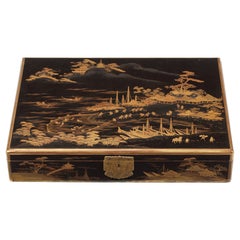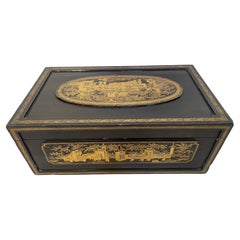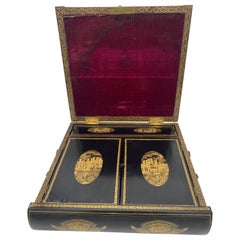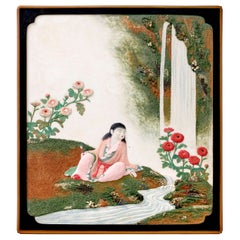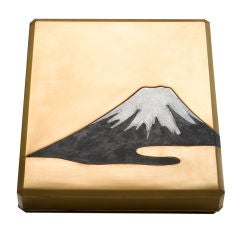
Mt. Fuji Writing Box
View Similar Items
1 of 6
Mt. Fuji Writing Box
About the Item
The writing box represents a message for the New Year. The snow-clad image of Mount Fuji on the cover has for centuries been a favorite New Year’s motif, and the box would have been opened with the expectation of finding yet more New Year messages. Here the viewer would not have been disappointed, as she or he would have found images of a crane flying over ocean waves, a combination that further denotes the New Year. This combination was brought to Japan from China a millennia ago, and has become a firm part of the cultural symbolism marking the beginning of a new year in Japan.
An important annual ritual unites writing boxes such as this one with the New Year. This is the kakizome ceremony, which marks the first time that a writing box is opened in the new year. Kakizome (literally "first writing") is a Japanese term for the first calligraphy written at the beginning of a year, traditionally on the 2nd of January. Originally kakizome was performed using an ink stick rubbed on the suzuri ink stone with droplets of the first water drawn from the well on New Year's Day. Seated facing a favorable direction, the calligrapher would then open his or her writing boxes and write poetry containing auspicious words and phrases such as long life, spring, or perennial youth.
The present writing box was surely used many times for this ritual and then packed away in its fitted box until the next New Year. It was the ideal vessel with which to perform this ritual, as its images reminds the calligrapher of the season of the year and the reason for performing the ritual.
- Dimensions:Height: 1.66 in (4.2 cm)Width: 8.39 in (21.3 cm)Depth: 9.65 in (24.5 cm)
- Materials and Techniques:
- Place of Origin:
- Period:
- Date of Manufacture:Meiji Period, ca 1900
- Condition:
- Seller Location:New York, NY
- Reference Number:Seller: T-31771stDibs: U110510898829
Authenticity Guarantee
In the unlikely event there’s an issue with an item’s authenticity, contact us within 1 year for a full refund. DetailsMoney-Back Guarantee
If your item is not as described, is damaged in transit, or does not arrive, contact us within 7 days for a full refund. Details24-Hour Cancellation
You have a 24-hour grace period in which to reconsider your purchase, with no questions asked.Vetted Professional Sellers
Our world-class sellers must adhere to strict standards for service and quality, maintaining the integrity of our listings.Price-Match Guarantee
If you find that a seller listed the same item for a lower price elsewhere, we’ll match it.Trusted Global Delivery
Our best-in-class carrier network provides specialized shipping options worldwide, including custom delivery.You May Also Like
A superb Japanese export lacquer writing box
Located in Amsterdam, NL
Kyoto, circa 1680
The writing box has bevelled edges and a kabusebuta (overhanging lid), and is completely covered in black lacquer in maki-e and decorated in gold, silver and red h...
Category
Antique 17th Century Japanese Lacquer
Materials
Lacquer
19th Century Chinese Lacquer Writing Box
Located in Brea, CA
A truly beautiful and amazing piece. From the late 19th century of the Qing Dynasty in China, this lacquered writing box is decorated with the desi...
Category
Antique Late 19th Century Chinese Qing Lacquer
Materials
Lacquer
19th Century Chinese Lacquer Writing Box
Located in Brea, CA
A truly beautiful and amazing piece. From the early 19th century derived from the Qing Dynasty in China, this lacquered writing box is decorated wi...
Category
Antique Early 19th Century Chinese Qing Lacquer
Materials
Lacquer
Rare Japanese Lacquer Writing Box Suzuribako Meiji Period
Located in Atlanta, GA
A Japanese Lacquer writing box Suzuribako Meiji Period (1868-1912), likely circa late 19th century. This suzuribako is one of the most unusual boxe...
Category
Antique 19th Century Japanese Japonisme Lacquer
Materials
Lacquer
Japanese Meiji Gilt Lacquer Writing Desk & Poem Box
Located in Chicago, IL
With intricate construction and exquisite decoration, this fine tabletop writing set is a masterpiece of Japanese lacquerware. The matching set includes a writing table (bundai) and poem box (tanzaku bako), both decorated with gilt lacquer in the style of takamaki-e and hiramaki-e urushi lacquer.
Framed by everted ends, the lacquered table top is masterfully worked, depicting a robed man seated on a veranda within an idyllic mountain-and-water landscape. Swirling clouds drift overhead and pine trees bend towards the sky, formed of raised lacquer (takamaki-e) and mother of pearl inlay (raden). Dark lacquer at the corners imitate metal hardware and the sculptural corner legs are decorated with raised motifs of maple leaves.
The writing table includes a matching poem box (tanzaku bako), used for storing paper cards of painted calligraphy and poetry. The lid is similarly decorated in shimmering gilt lacquer with a raised design of a fine carriage beneath a pine tree, draped in cloths and shaded by bamboo blinds...
Category
Early 20th Century Japanese Meiji Lacquer
Materials
Mother-of-Pearl, Wood
Japanese Lacquer Suzuribako 硯箱 'Writing Box' by Hattori Toshio 服部俊夫 '1943'
By Hattori Toshio (Shunsho)
Located in Amsterdam, NL
A small Japanese black and gold lacquer suzuribako (writing box) with cartwheels in water, by the artist Hattori Toshio (1943).
Of rectangular form with rounded corners, bearing a lustrous rôiro ground throughout, the exterior sides of the box and exterior of the cover finely decorated in gold and little silver takamaki-e with cartwheels flowing in a dynamically executed body of water with many swirls
and gushes as well as scattered dew drops, the interior tray fitted with a rectangular ink stone and silver suiteki (waterdropper).
The underside signed ‘Toshi’.
With the original wooden tomobako with hakogaki reading Namikuruma makie suzuribako (The
writing box set, with a design of wheels in water), as well as a leaflet written in Japanese with the artist’s biography up to 1987.
Hattori Toshio (b. 1943), art name Hattori Shunsho, was first selected for the Nitten exhibition in Showa 38 (1963). Since then, he has exhibited more than twenty times at the Nitten and other exhibitions, winning numerous prestigious awards. In 1995,
he had an audience with Pope John Paul II and presented the Pope with a lacquer reading table. In 2004, he created the shelves for the guest room of the Kyoto State Guest House of the Government of Japan. He is a member of the Kyoto Crafts Artists Association, the Kyoto Lacquer...
Category
Late 20th Century Japanese Lacquer
Materials
Wood, Giltwood, Lacquer
Recently Viewed
View AllMore Ways To Browse
Lacquered Orange Box
Crane Box
Lacquer Writing Box
Chinese Ritual Vessels
Calligraphy Box
Japanese Writing Box
Chinese Ink Stone
Meiji Water Vessel
Mt Fuji
Japanese Mt Fuji
Antique Wood Cutter
Antique Japanese Writing Box
Chinese Ink Box
Paper Cutter
Antique Paper Cutter
Antique Calligraphy Pens
Chinese Lacquer Writing Box
Chinese Export Lacquer Chess
